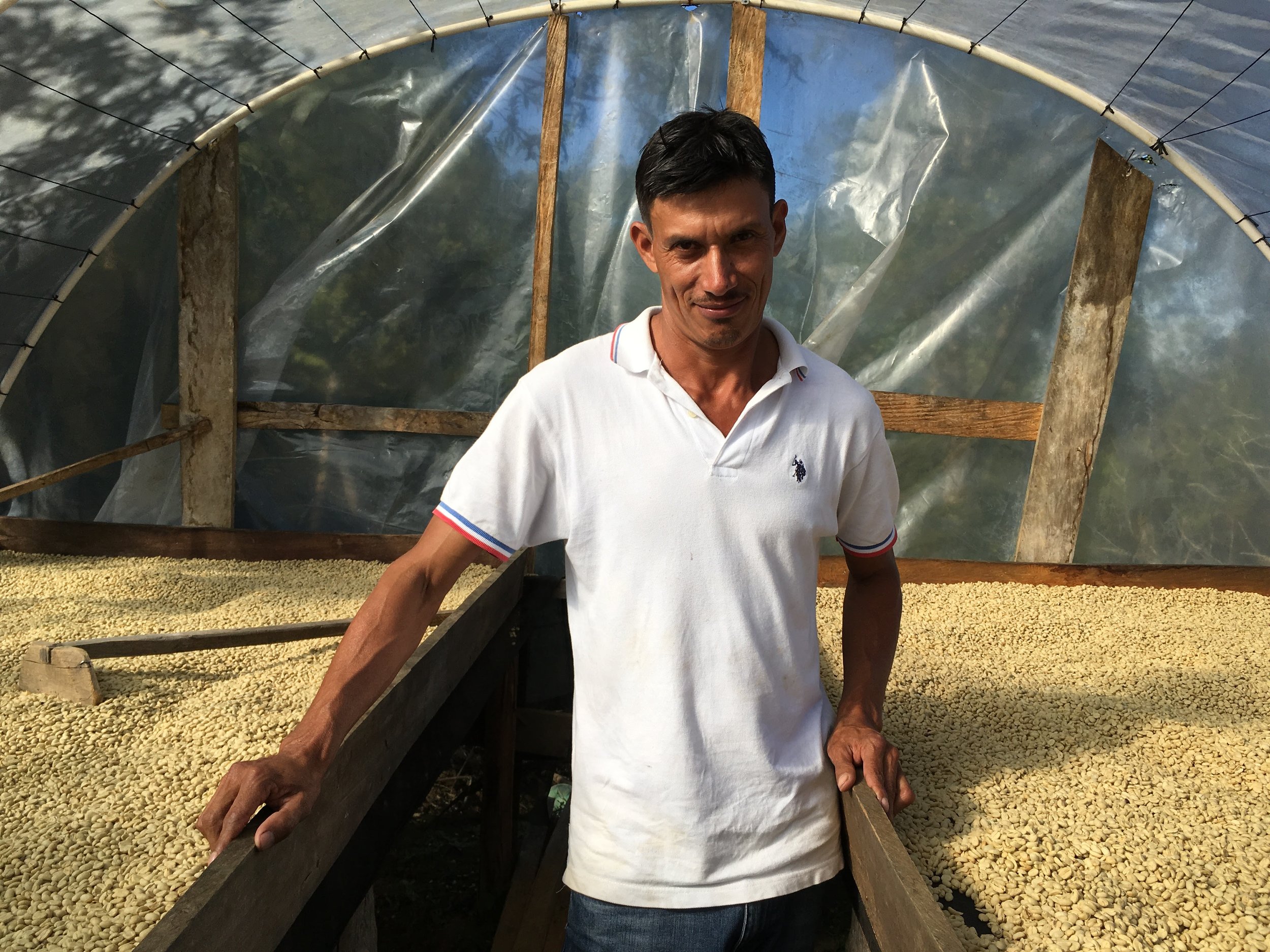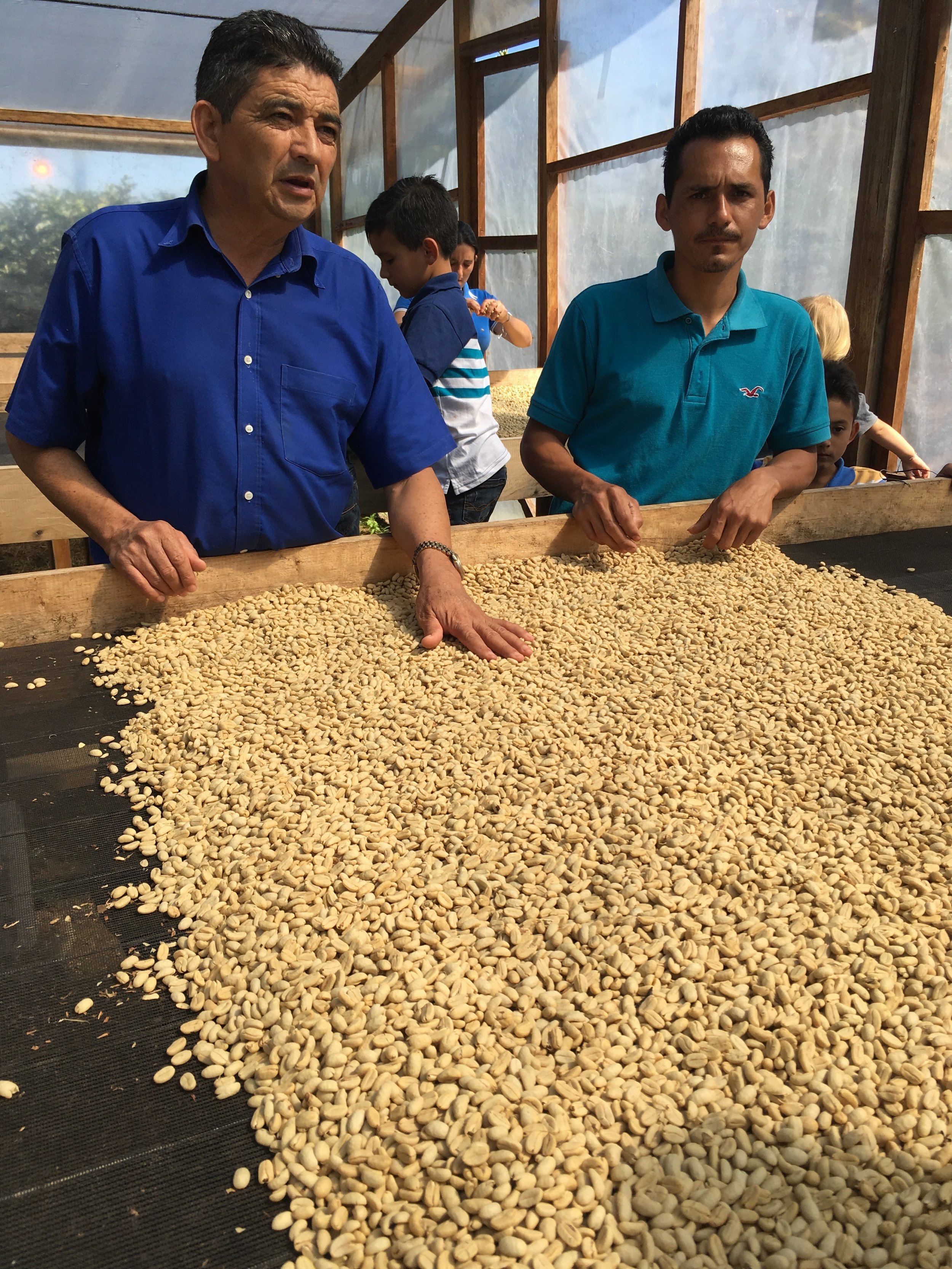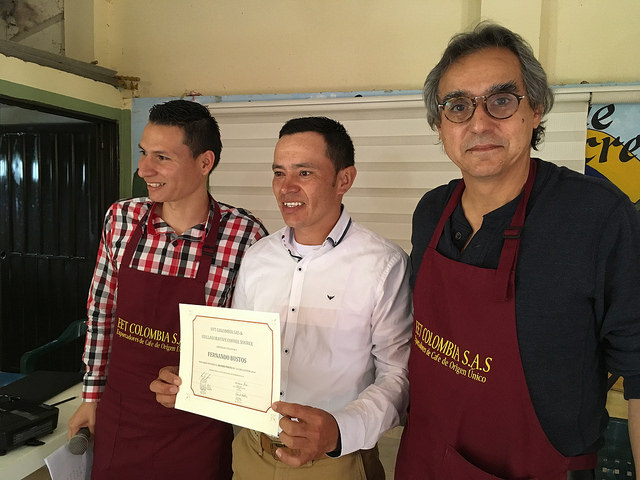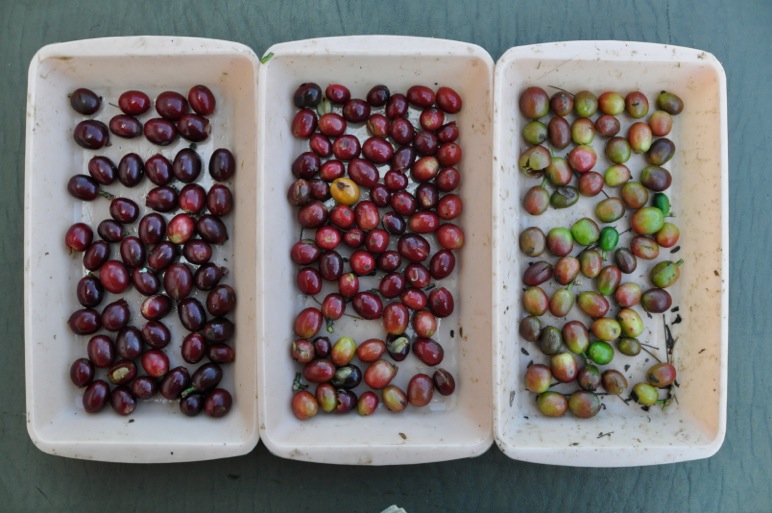Acevedo Cup winners and other stellar coffees of the region will be arriving soon! Order your samples by contacting Sal in the US and Nico in Europe.
Jair Caicedo was this year’s winner, a surprise to many at the awards ceremony on Jan 21, as the young farmer is only 26 years old.
The full list of winners
1. Jair Caicedo, Finca Buena Vista
2. Alberto Calderon, Finca La Esmeralda
3. Carlos Calderon, Finca El Porvenir
4. Carmelo Carmelo Blend:
Oscar Ferney Cruz, Finca Jerico
William Arley Cruz, Finca Jerico
Jaimr Useche Gonzalez, Finca La Luna
Dionar Aleis Useche Gonzalez, Finca Los Alpes
5. Blend:
Otoniel Cordoba, Finca El Jardin
Edilson Calderon, Finca El Tesoro
Manuel Calderon, Finca Mira Flores
6. Jhon Wilson Poveda, Finca Danny
7. Jhon Wilson Poveda, Finca Danny
8. Maria Bercelia, Finca Los Angeles
9. Guillermo Rojas, Finca La Falda
10. Blend:
Miller Norberto Bustos, Finca El Mirador
Jamir Usache, Finca La Luna
Diego Bernal, Finca Primavera
Alexander Granada, Finca El Rinconcito
Jose Ignacio Morales, Finca El Guadual
11. Jhon Wilson Poveda, Finca Danny
12. Maria Bercelia, Finca Los Angeles
13. Wilmer Cuellar, Finca Las Brisas
14. Maria Bercelia, Finca Los Angeles
15. Wilmer Cuellar, Finca Las Brisas
16. Mariano Leal, Finca Las Acacias
17. Luis Vargas, Finca Llanitos
18. Maria Bercelia, Finca Los Angeles
19. Carlos Calderon, Finca El Porvenir
20. Jair Caicedo, Finca Buena Vista
Good years and bad years
The overriding theme of this year’s trip to Acevedo is that producing quality is really hard. Sometimes a farmer does everything right and still their coffee doesn’t make it to 86, the benchmark both CCS and Fairfield have set. Why? This season it was the weather. Heavy rains damaged the flowers resulting in lower yields. And those rains, combined with unusually cold weather, caused problems when drying the coffee, resulting in poorer quality.
This is the heartbreaking part of our job. We have a quality benchmark, and there are many good reasons for setting it at 86, but some years that means rejecting coffee from producers we love and dearly want to support. We wish we could buy all their coffee. This year, the best we could do to support them was show up.
The impact of being there
Being present should not to be underestimated, especially in Colombia. Accepting an invitation into a Colombian’s home, allowing them to nourish you, even with just a snack, shows enormous respect for them, and their respect for you. Maribel Claros Castro, wife of Alexander Ordóñez, prepared us a traditional feast called Asado Huilense, meat marinated in bitter orange and cooked on a wood-fired stove. Alexander has had a bad year, thousands of kilos of his coffee were damaged when unusually cold temperatures hit his region while his coffee was drying. But rather than complain about his financial loss, he thanked us profusely for accepting their invitation for lunch. “My wife is an excellent cook,” he explained.
For the producers, the roasters are the real celebrities. Dillon Edwards of Parlor Coffee joined us on this trip to Acevedo and it was his fourth time in the region in two years. He brought gifts for his treasured producers, including roasted coffee in packages bearing the names of their fincas. For many years Colombia offered just one coffee, “Café de Colombia,” so it is a a genuine surprise and delight for these farmers to know their work as a family is presented directly to coffee consumers.
Bringing producers together
Events like the CCS Acevedo Cup also present a rare opportunity to collaborate. Seldom are so many producers of specialty coffee in one room together, as they were for the CCS Acevedo Cup awards ceremony. The after-party is as important as the awards presentation itself, the farmers use it to discuss, share and advise.
Special guests at the event this year were Team Tolima! Alejandro Renjifo of Fairfield Trading is a big advocate of regional collaboration, and this year he invited several producers from Planadas to join us on our farm visits and attend the awards ceremony, including Hernando Gomez, Ivan and Jhon Molano, and Astrid Medina. One of the greatest highlights of this trip was seeing Astrid Medina’s reaction to Maria Bercelia’s unique drying facility on her farm, Finca Los Angeles. What a treat it was to listen as these two rock stars of Colombian coffee discussed the finer points of fermentation and drying.
What it means to win
Despite the adverse weather, there was great coffee to cup. While this year's event wasn't the marathon of 2016, we still had 37 lots to taste and overall the cupping scores were higher than last year.
What does it mean to place in the Acevedo Cup? In addition to being recognised in the community, winning a place in the top 20 means a significant financial gain. Jair Caicedo will earn 2,200,000 Colombian pesos per carga (125kg of parchment coffee) for his winning lot. To put that price in perspective, the FNC are currently offering around 800,000 pesos per carga. Once yield rates are taken into account, Jair will earn about three times the current purchase price.
We are so grateful to all the farmers who invited us into their homes, offered us meals and refreshments, listened, shared, and gave us their precious time: Javier Pulgarín and Patricia Rodriguez, Luis Vargas and his family, Alexander Ordoñez and Maribel Claros Castro, and Maria Bercelia and Jose Erazo. We are so humbled by your generous hospitality. See you next year.
Acevedo Cup winners and other stellar coffees of the region will be arriving soon! Order your samples by contacting Sal in the US and Nico in Europe.

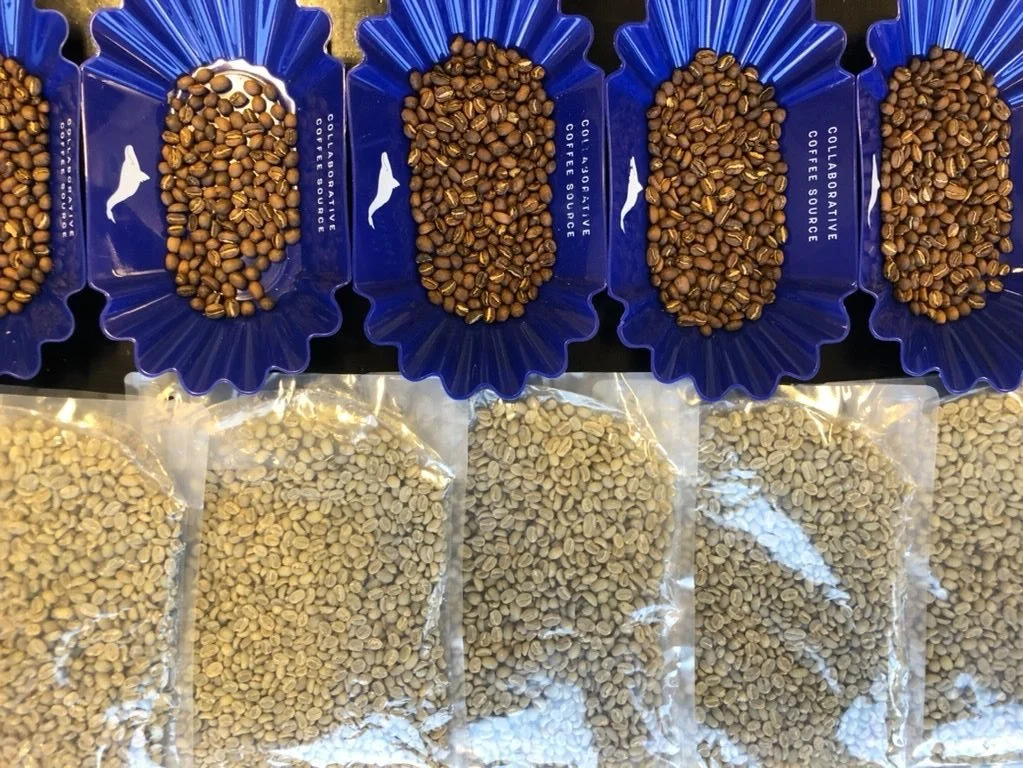




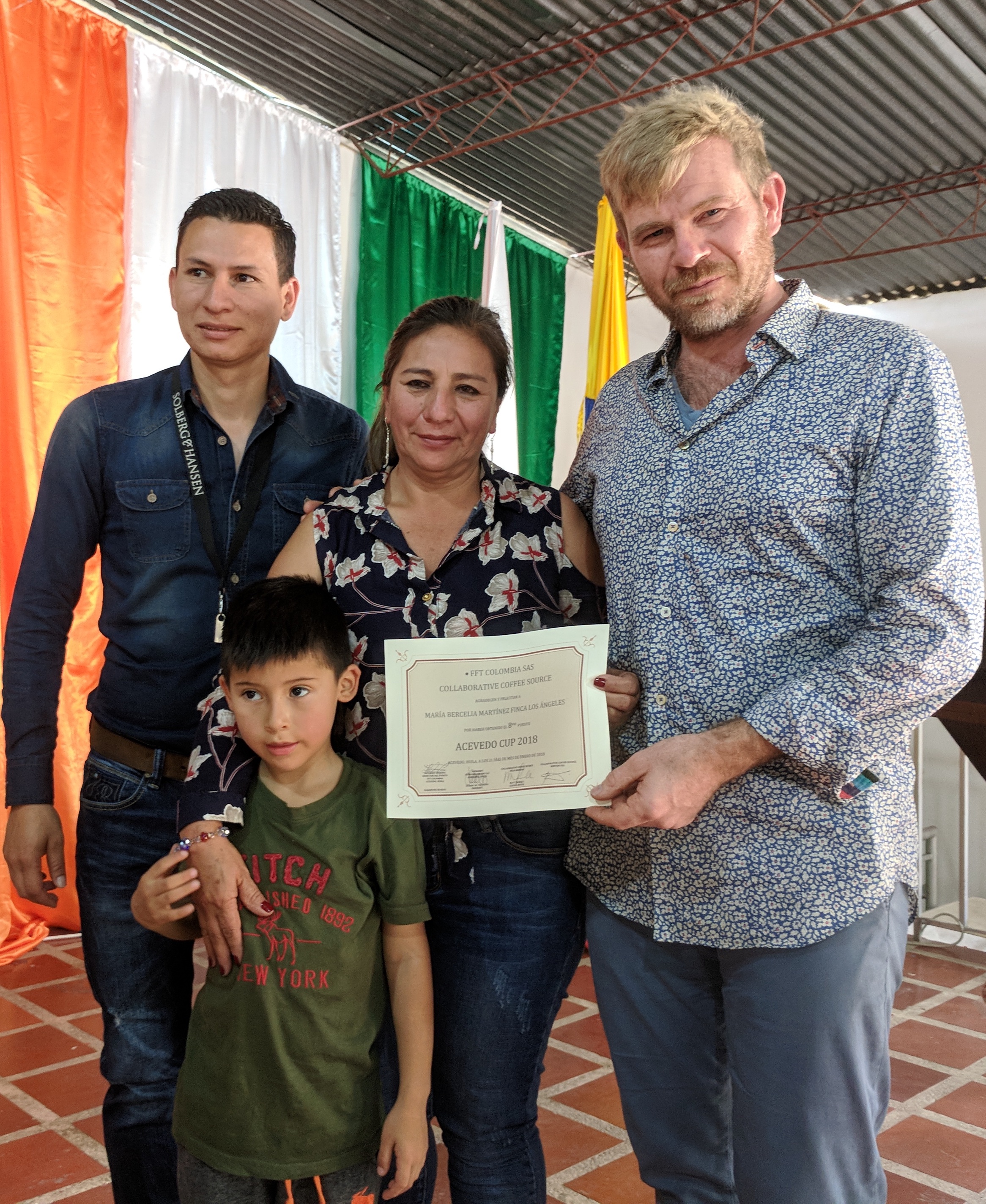
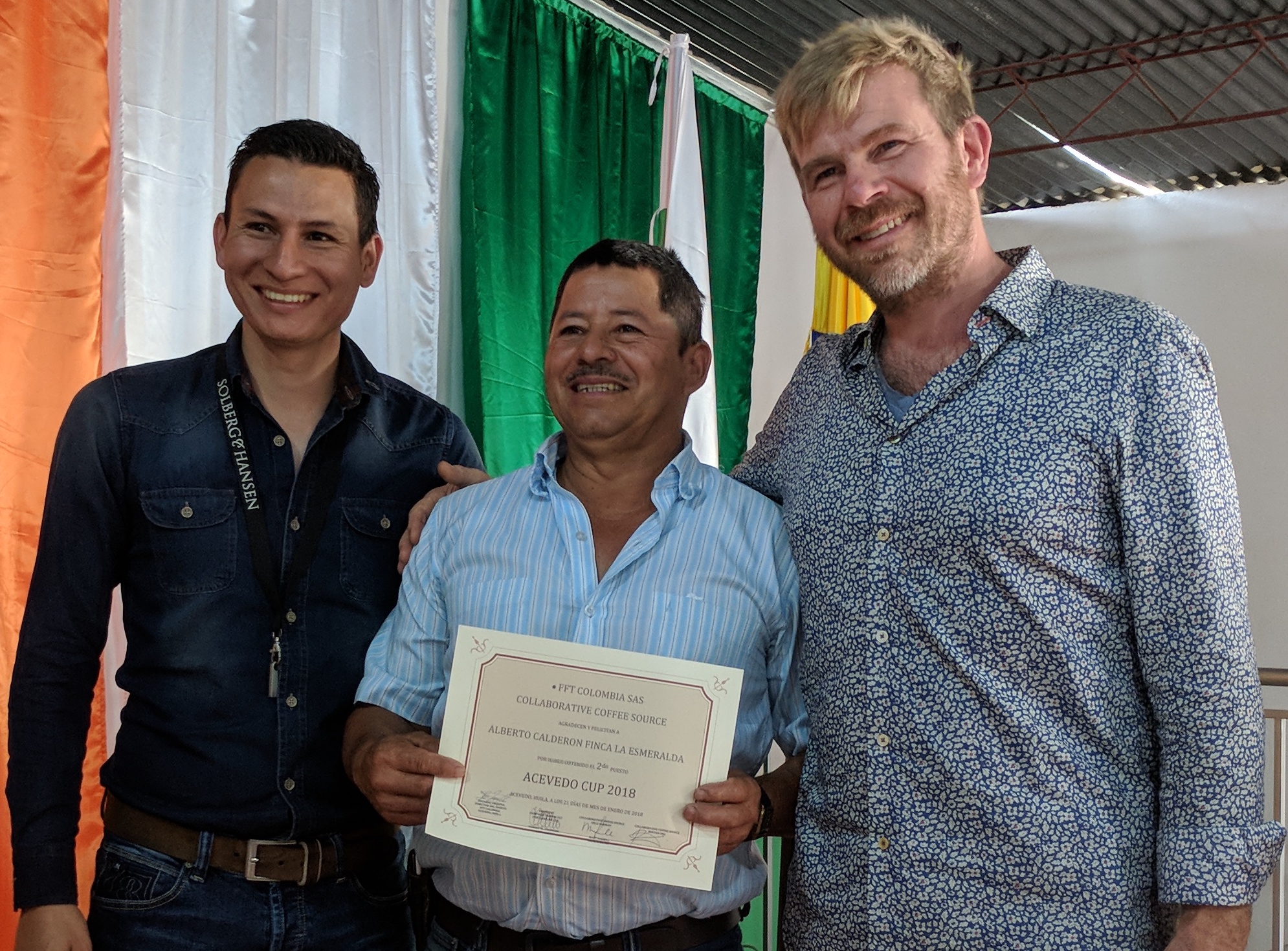
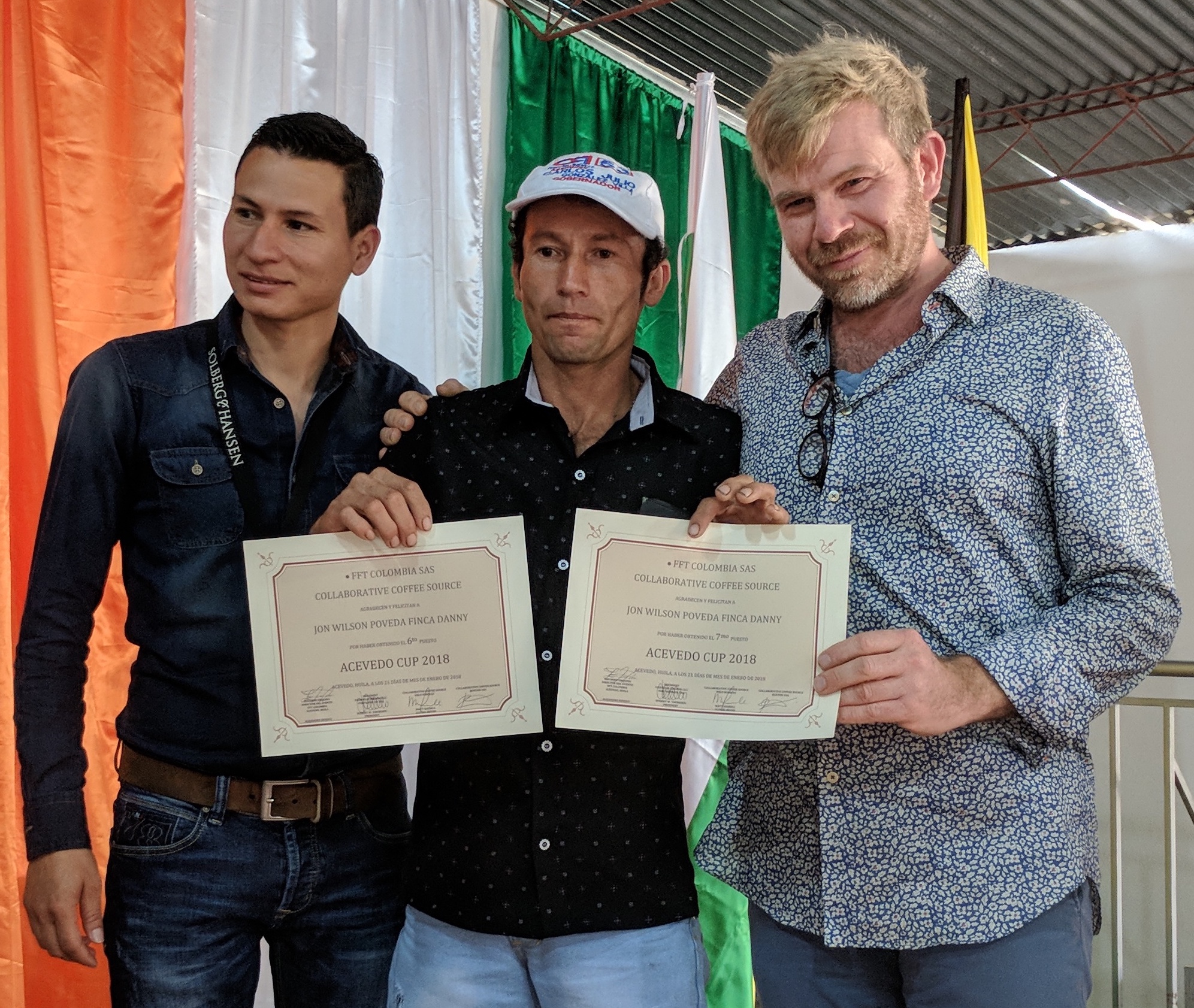
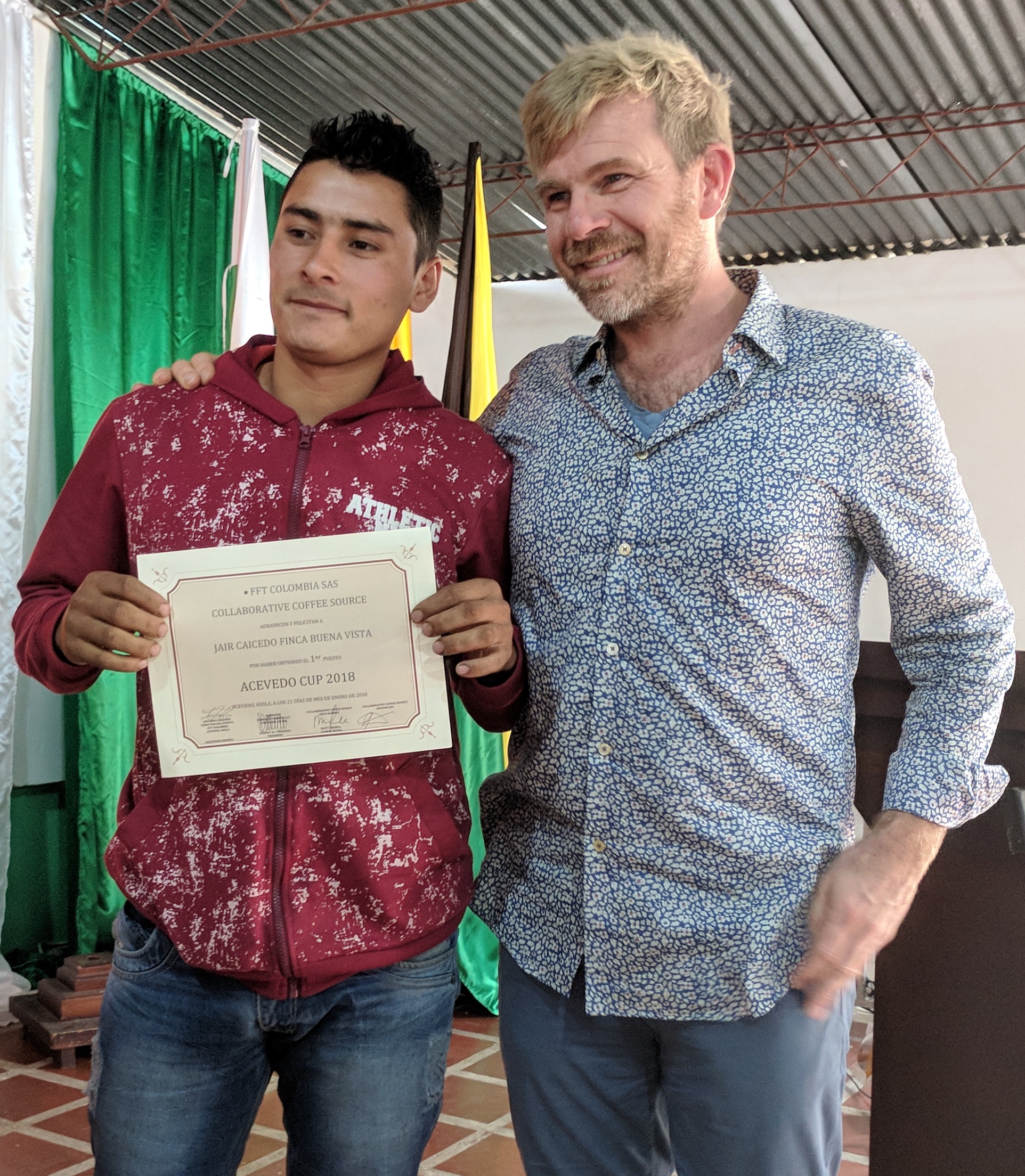
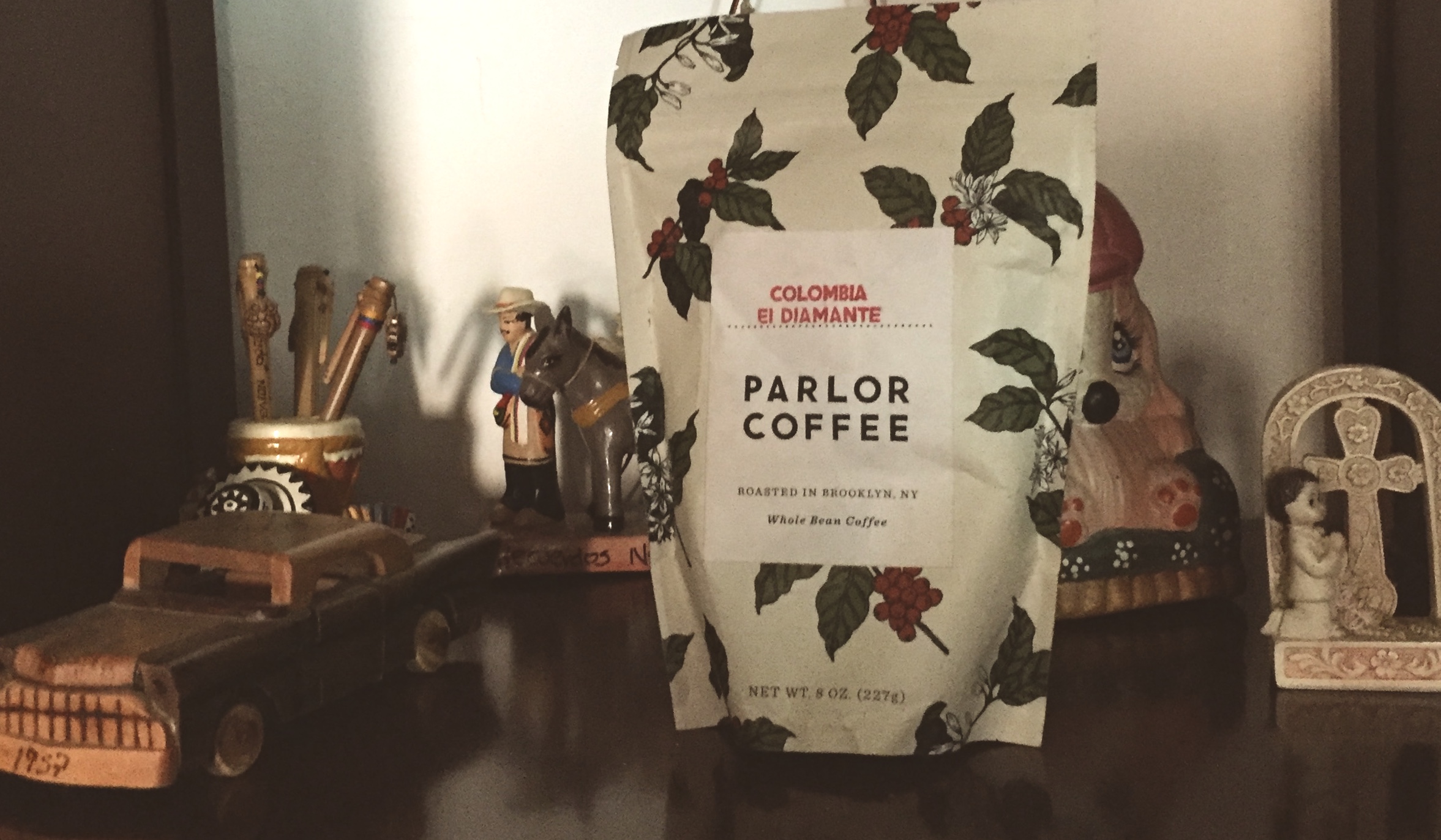

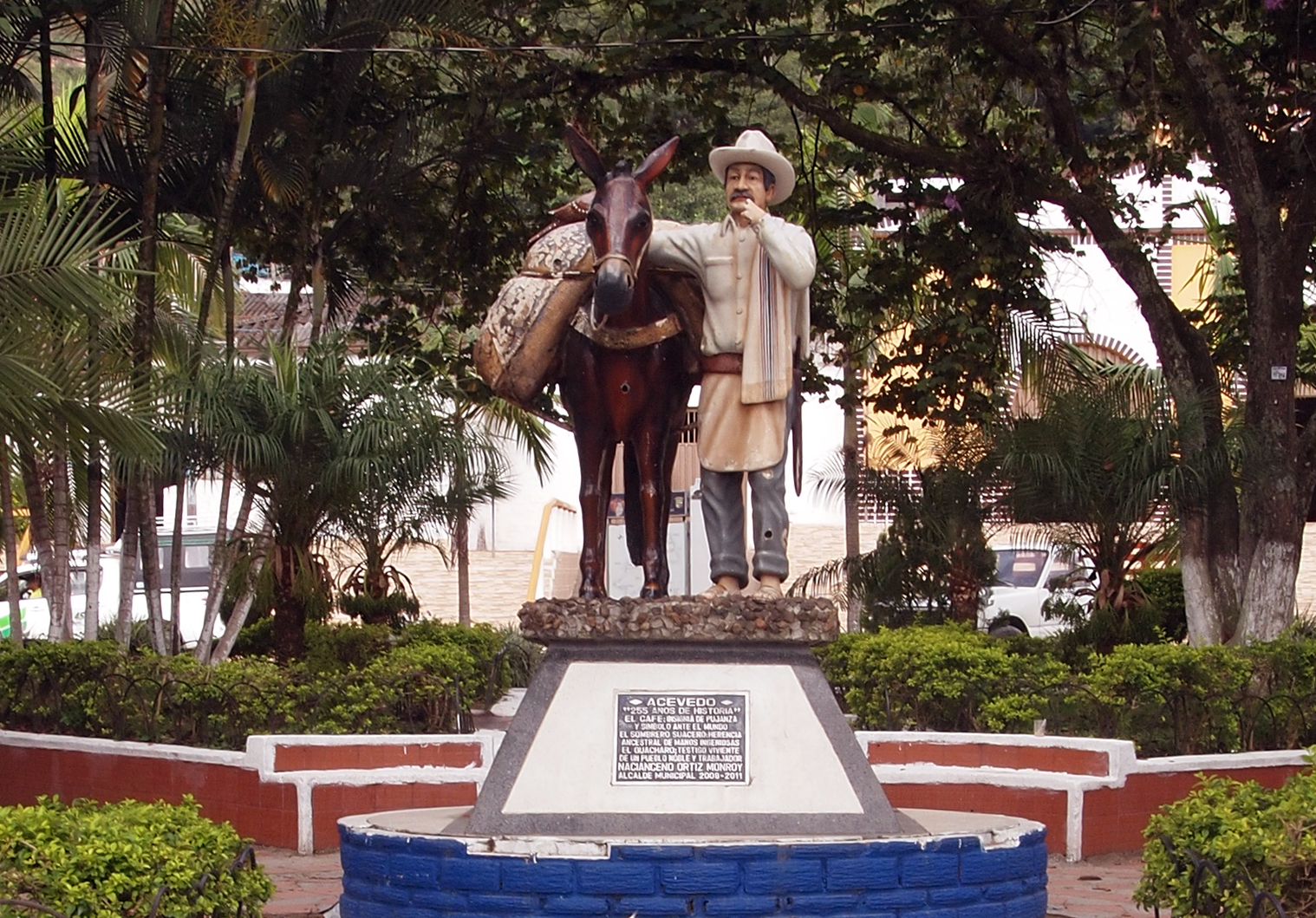
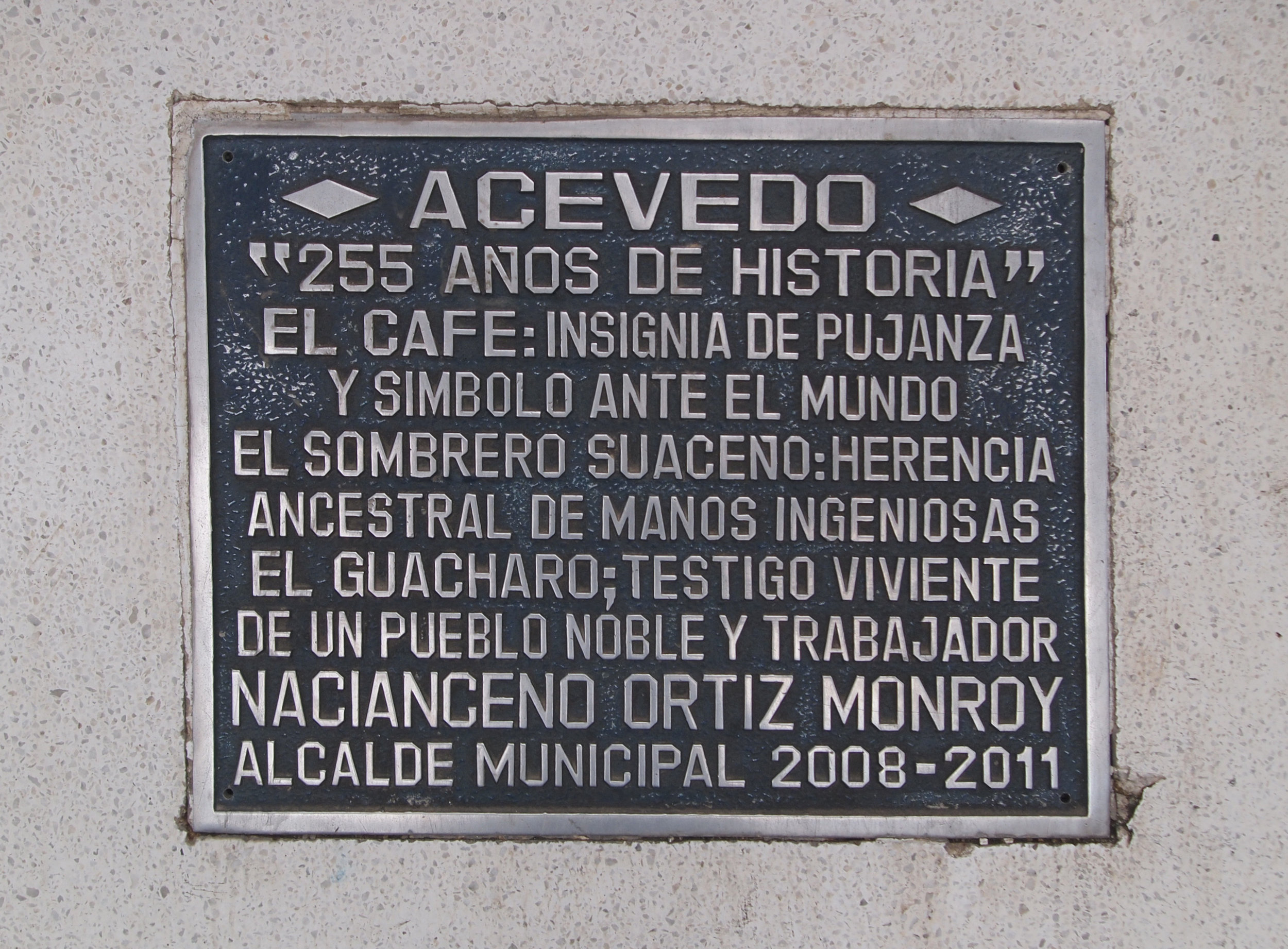
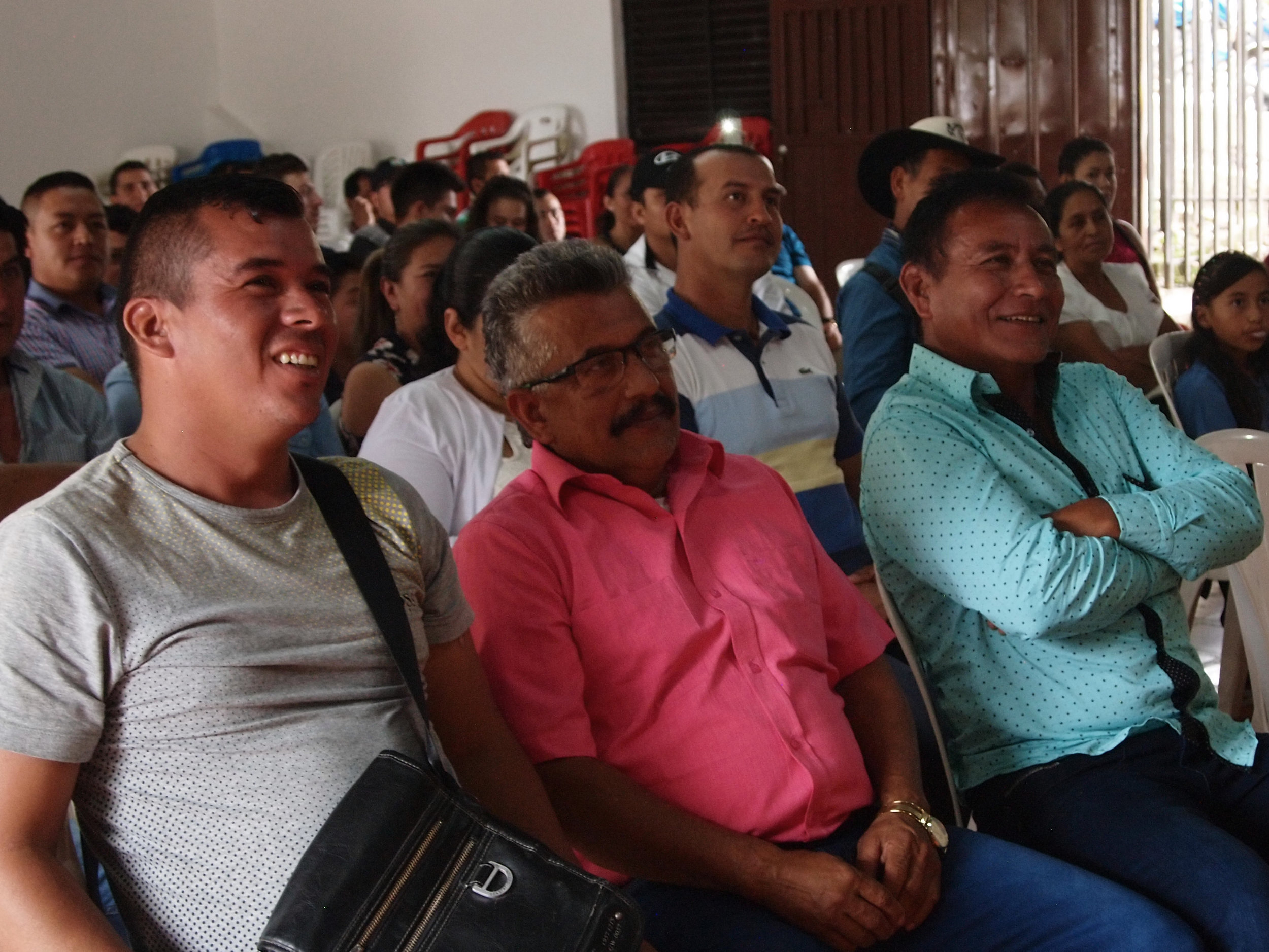
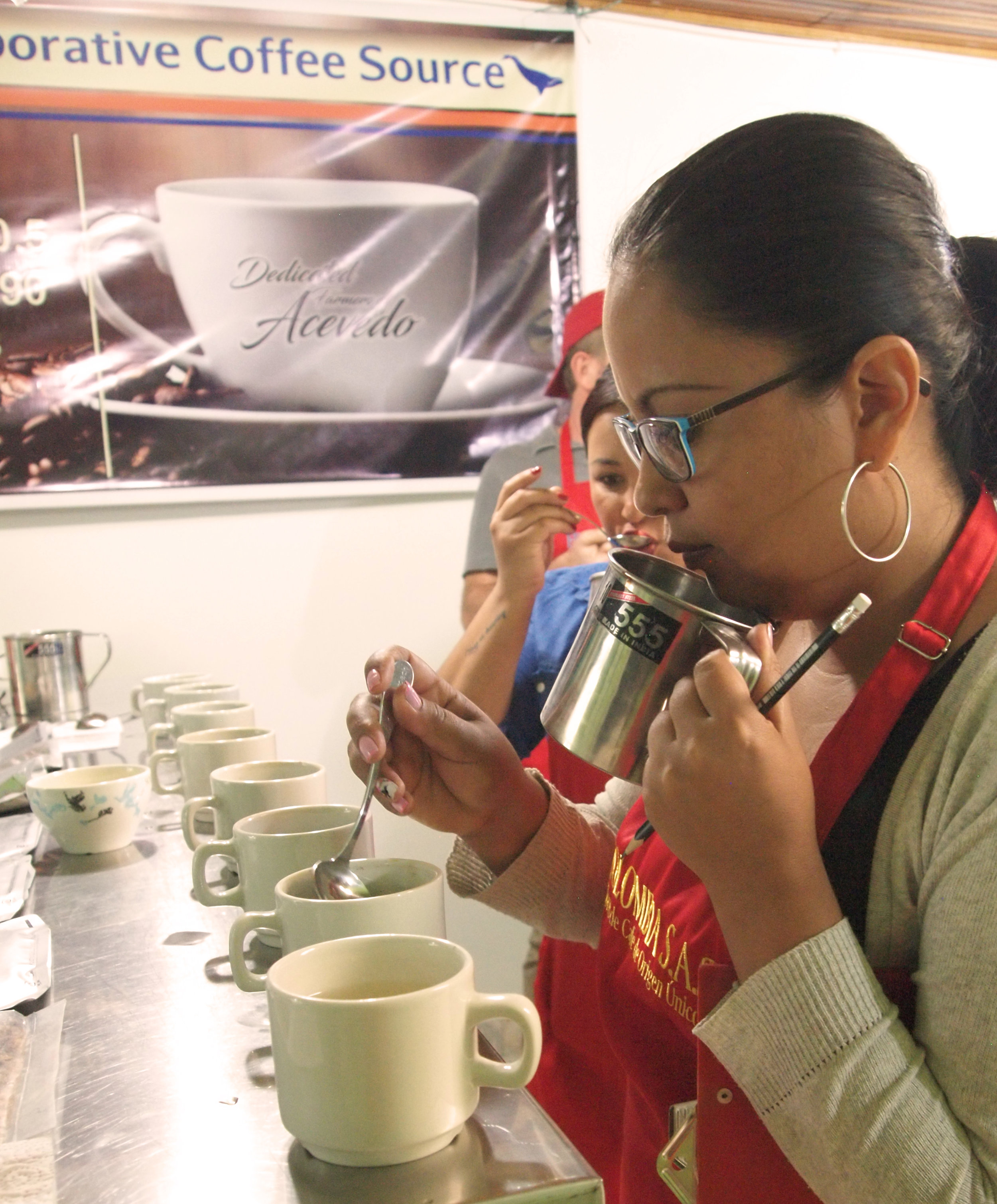
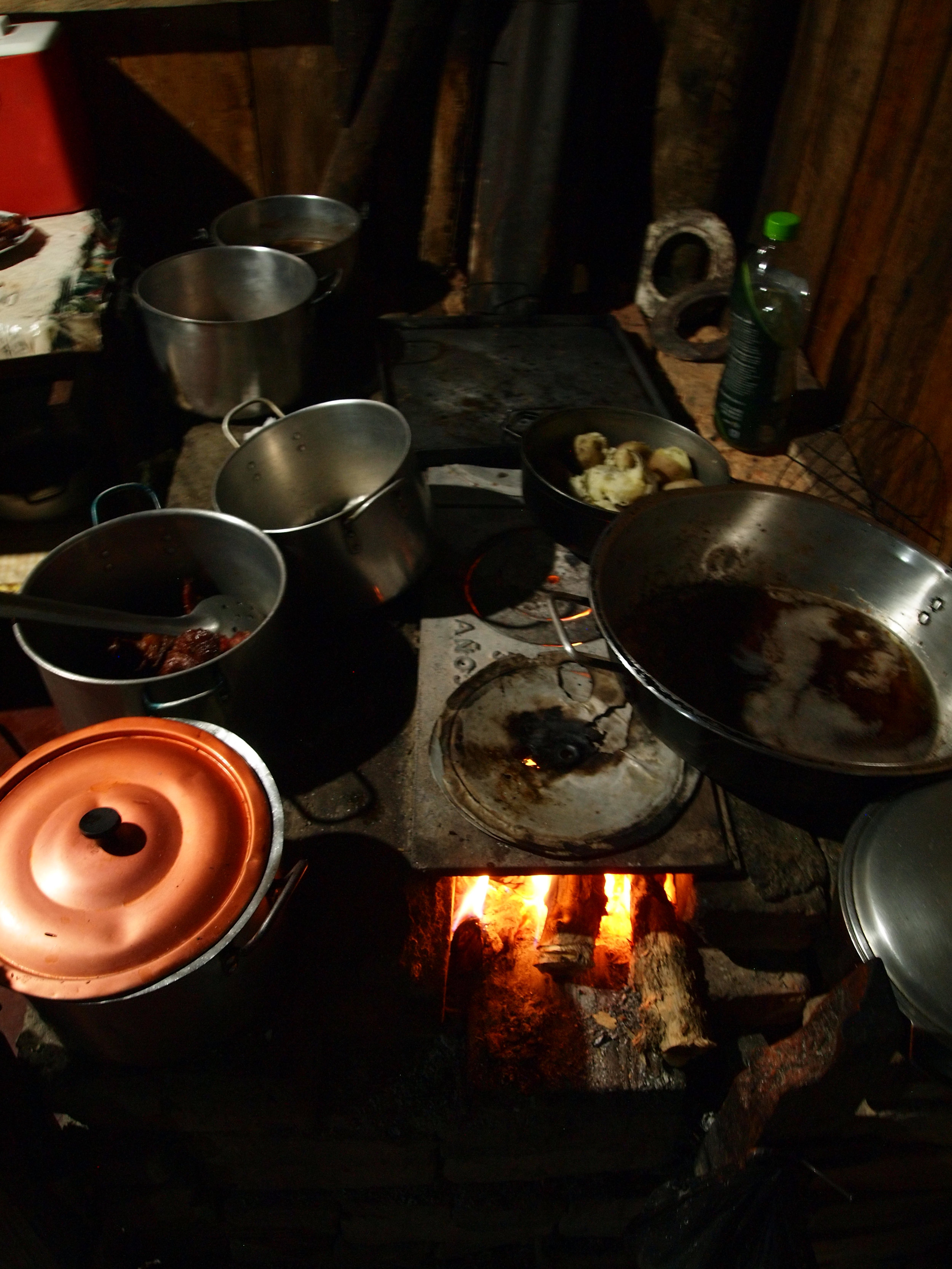
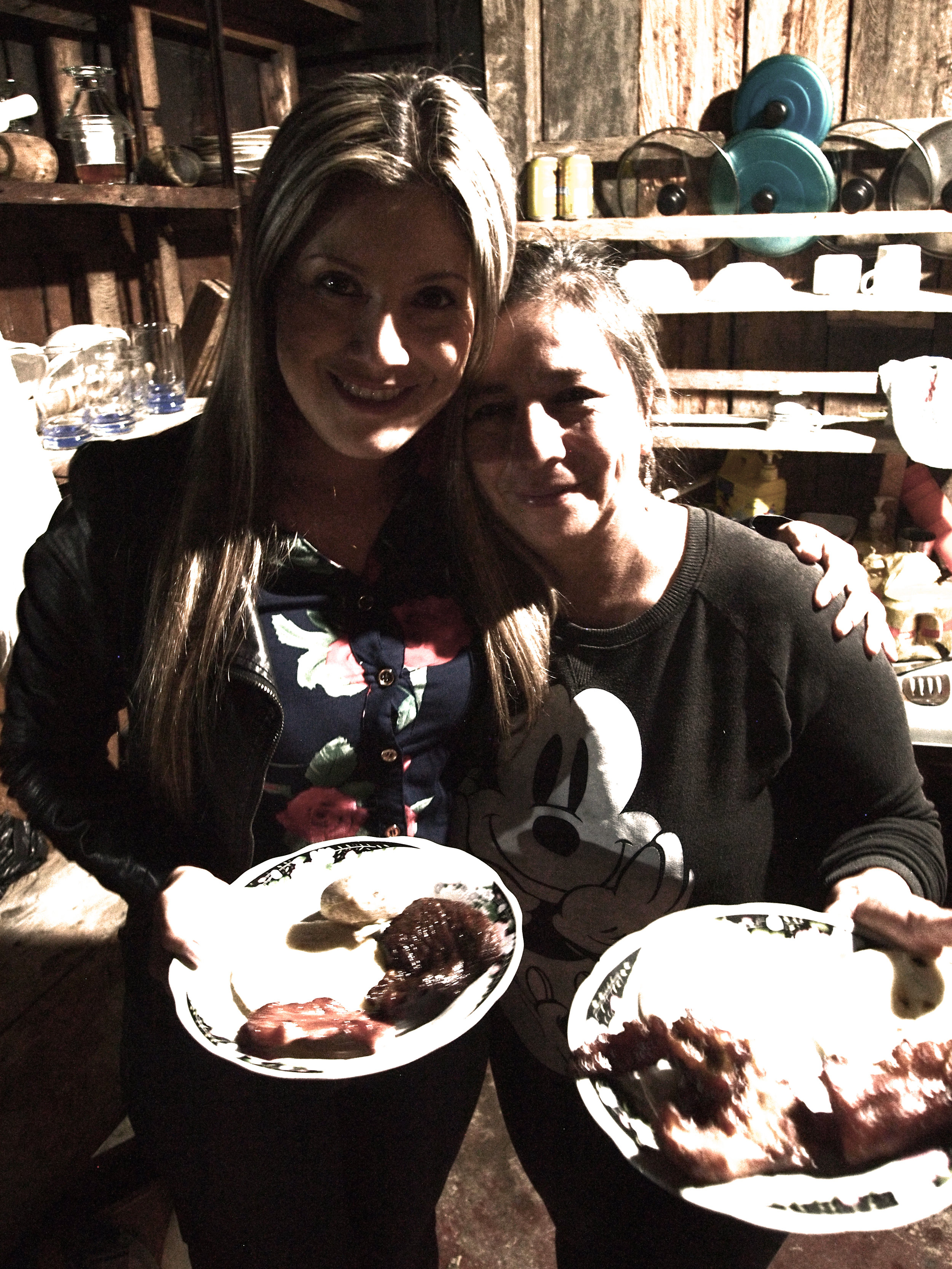
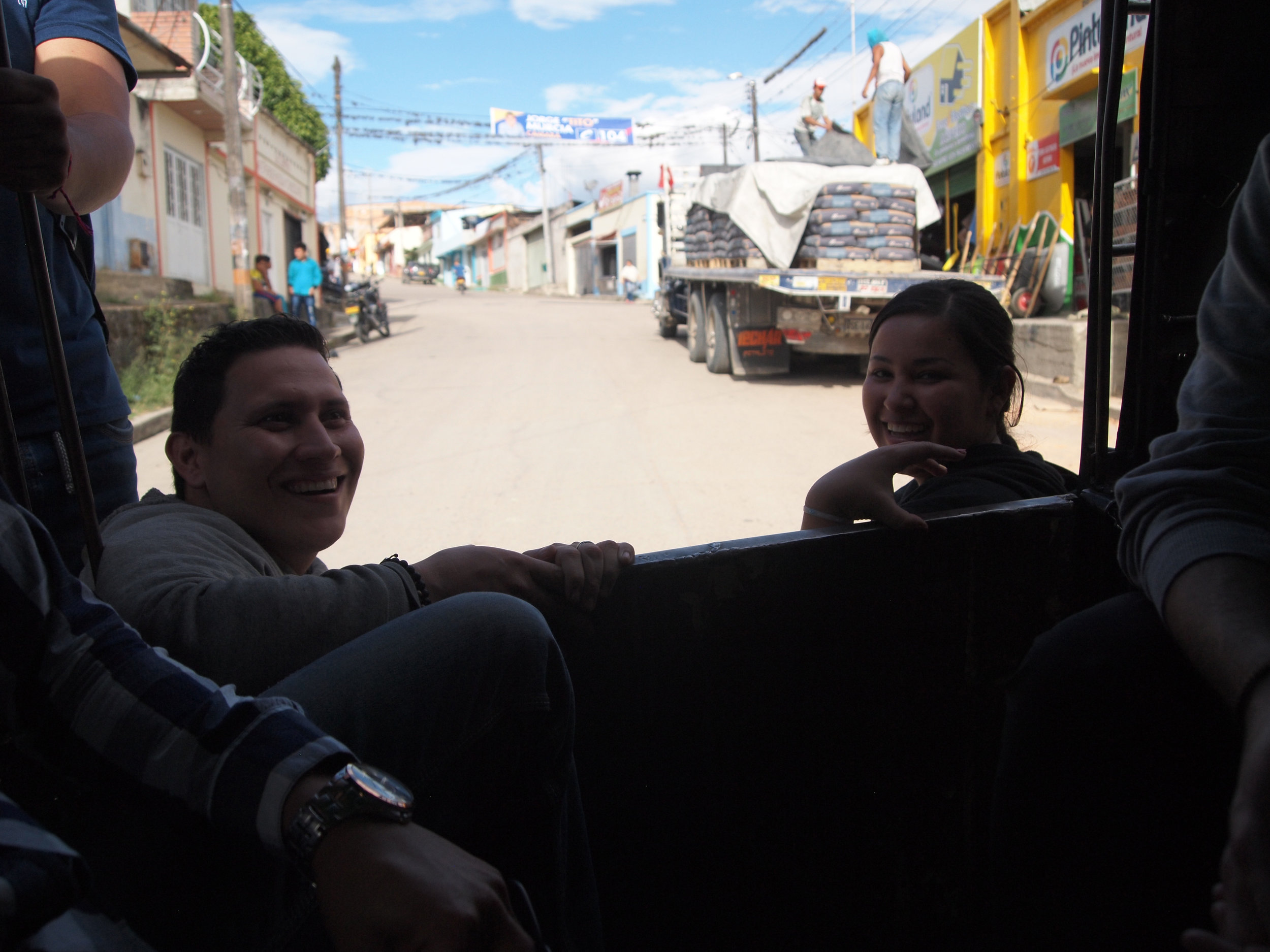
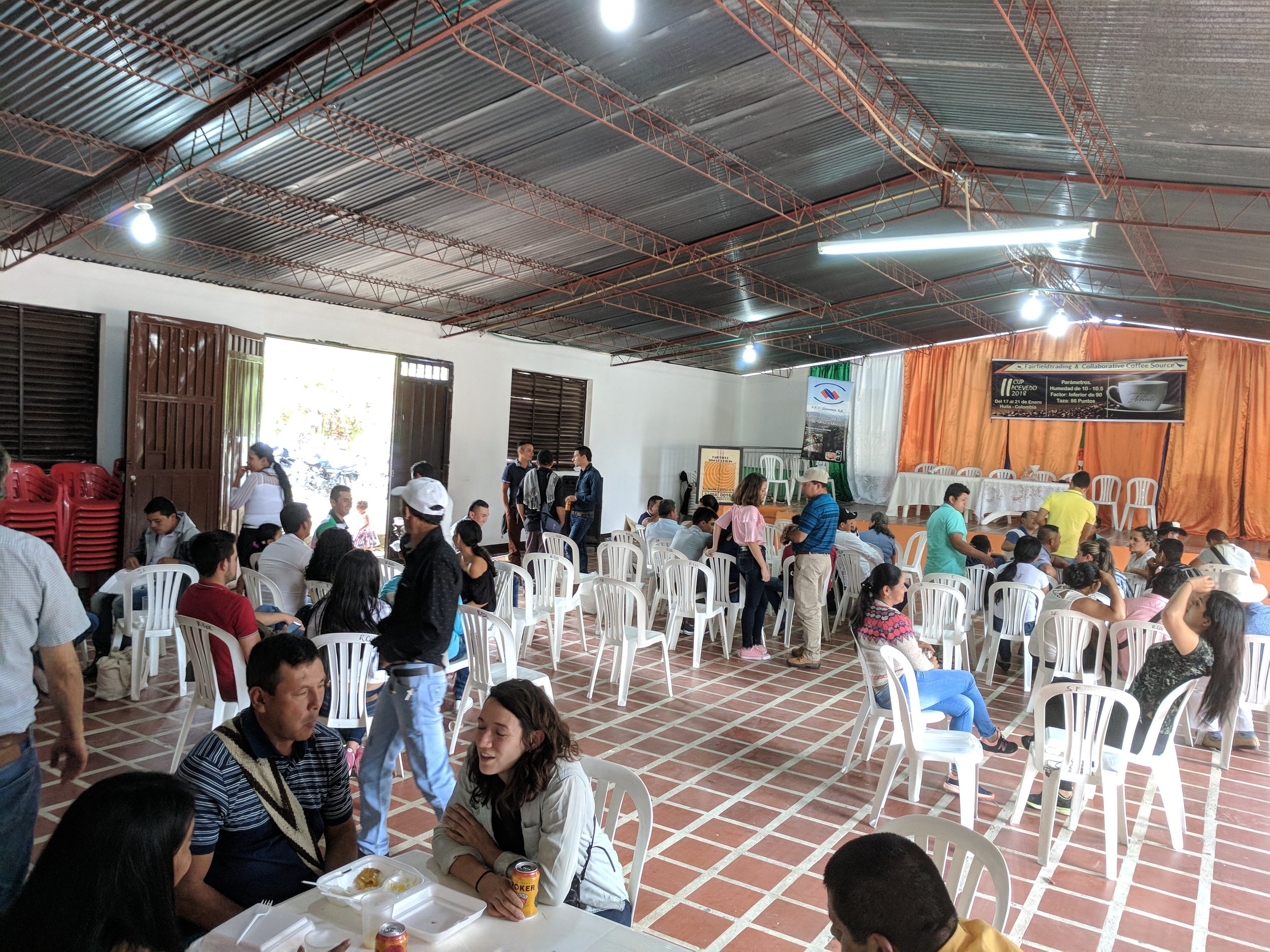
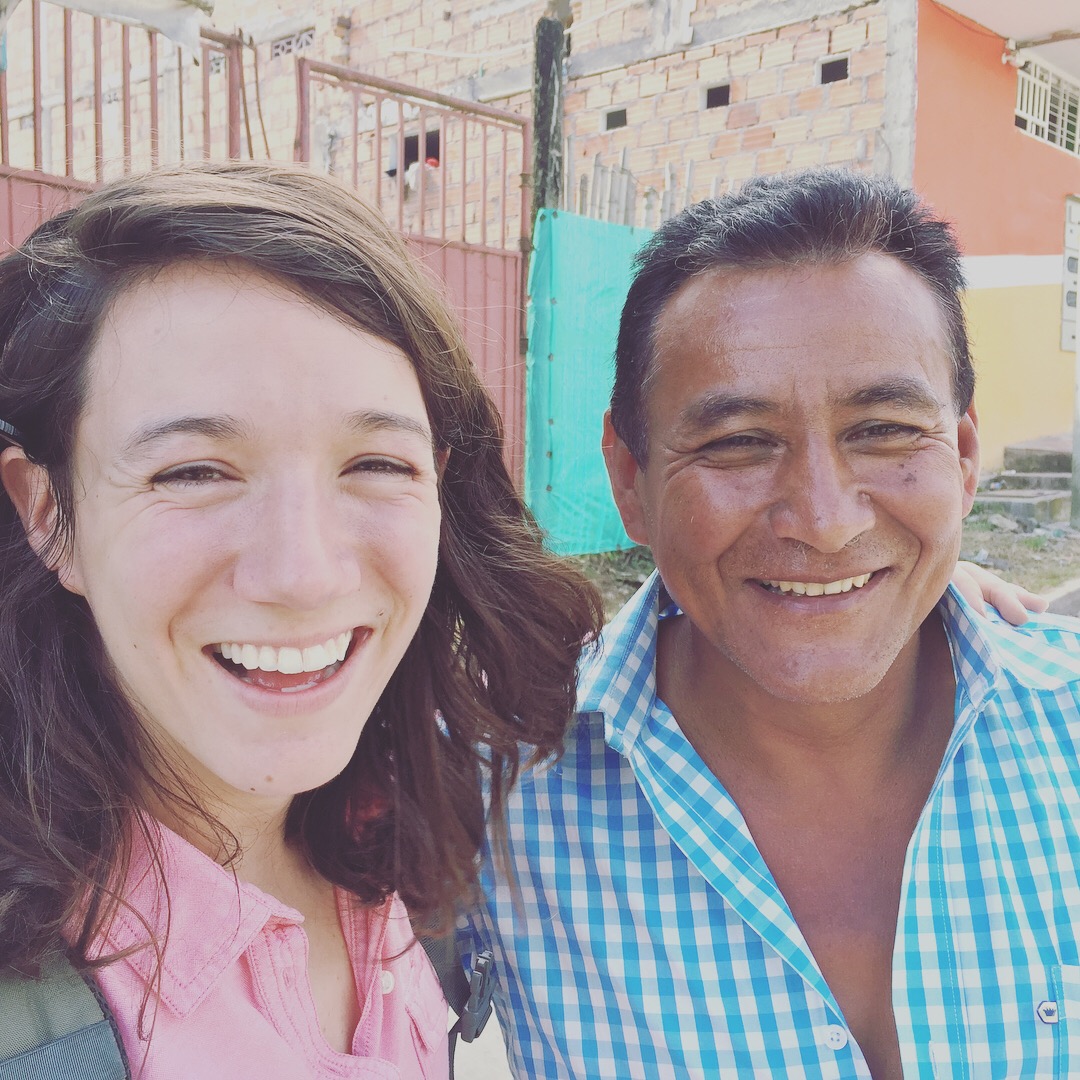
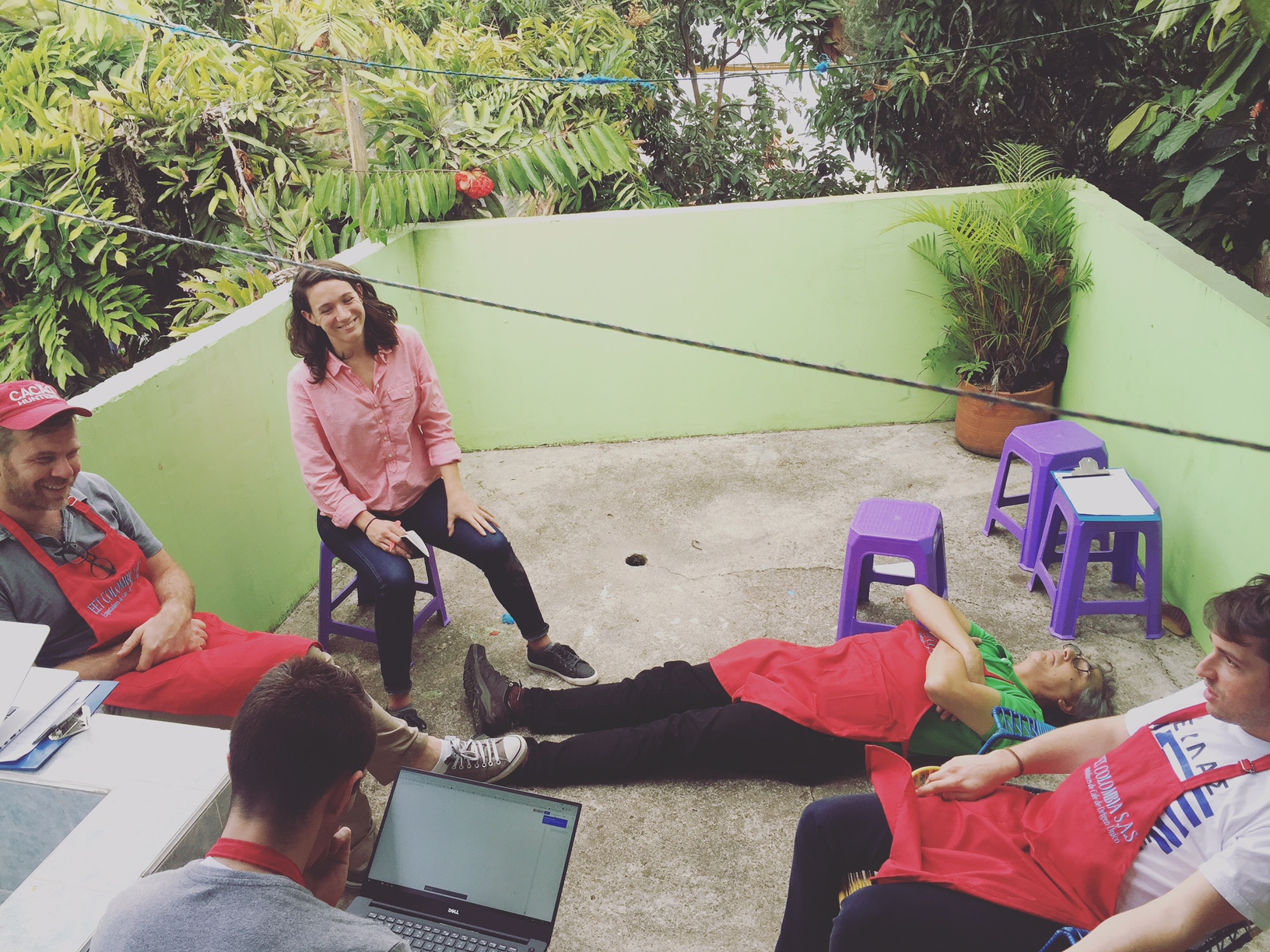
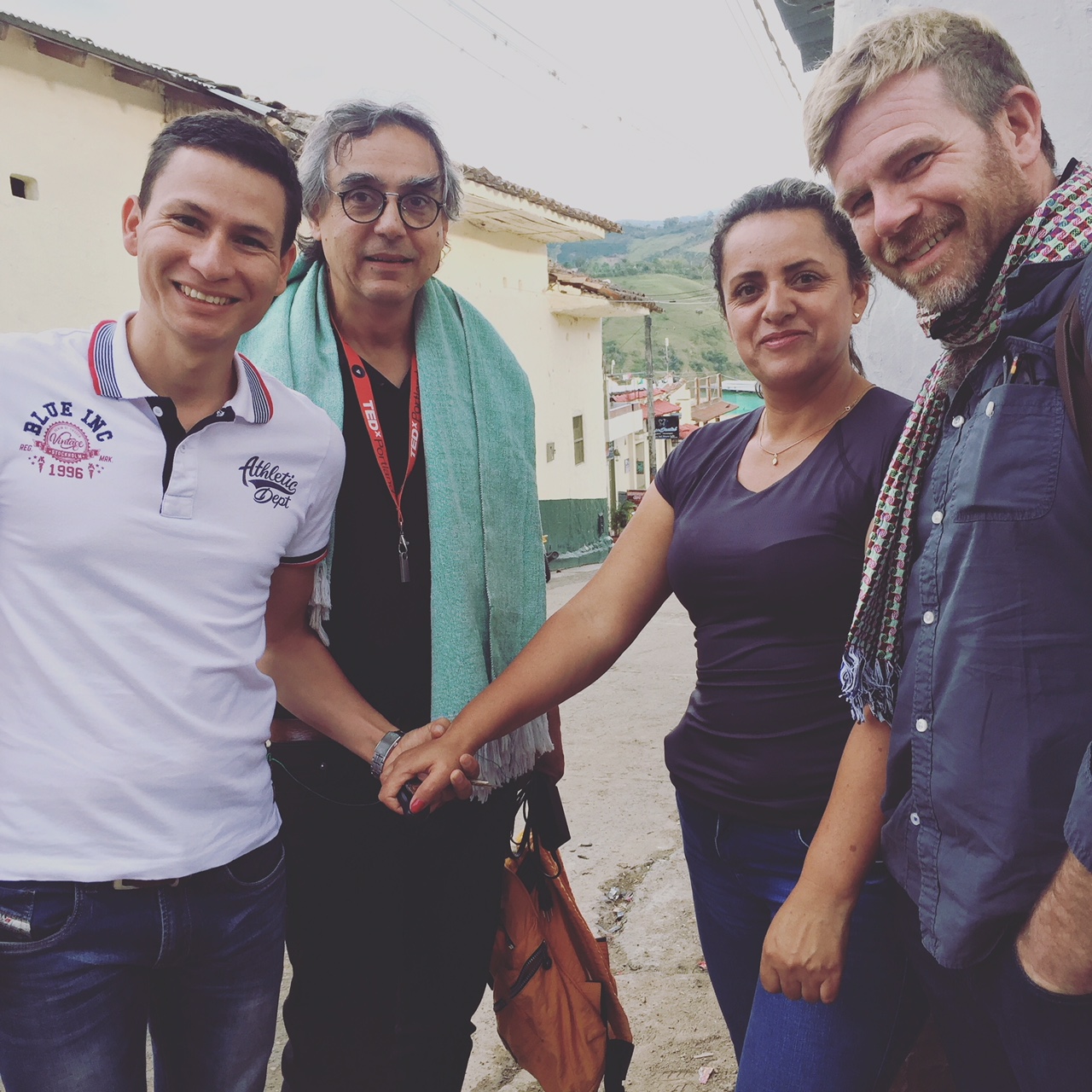



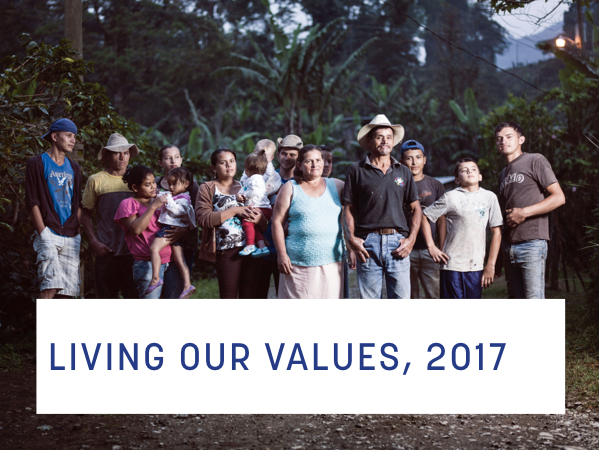







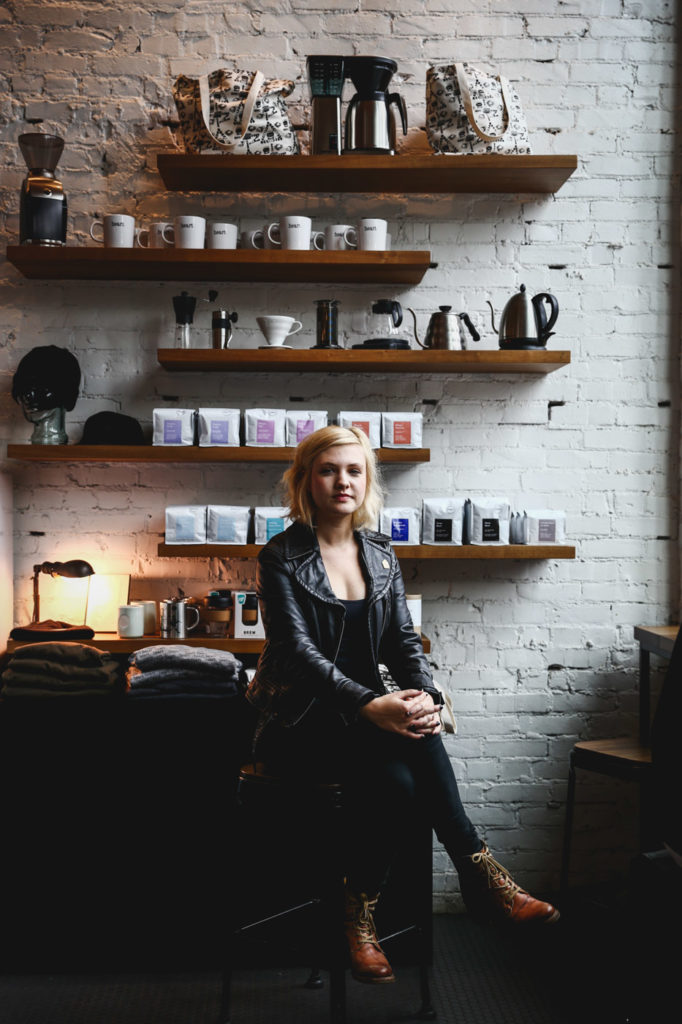 We'd like to introduce you to the newest member to CCS, Colleen King. Welcome, Colleen!
We'd like to introduce you to the newest member to CCS, Colleen King. Welcome, Colleen!